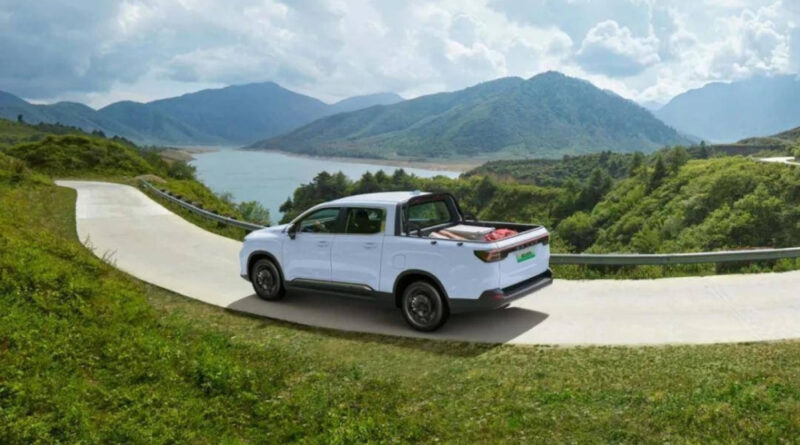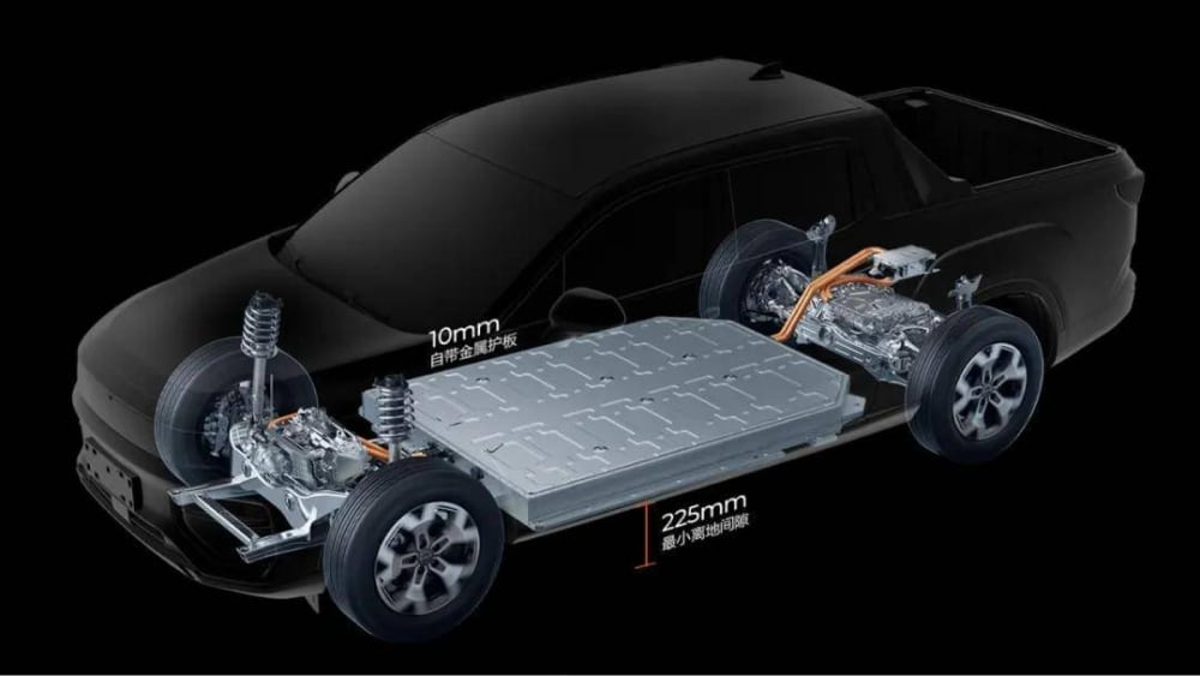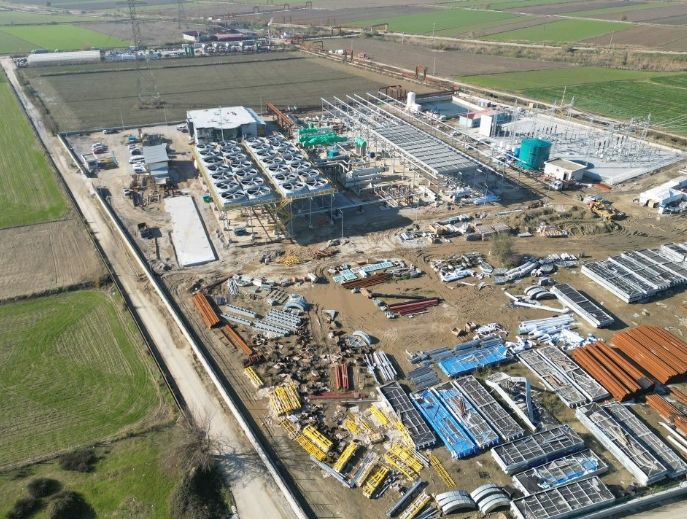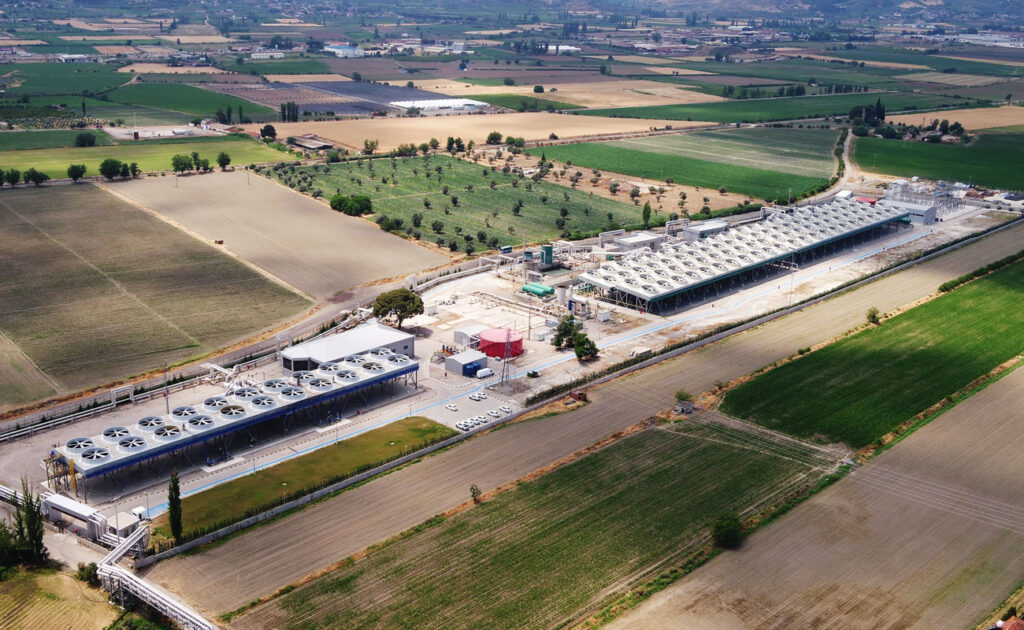
Credit: Geelu/Radar
Last week, Reuters had more details about the CATL EV platform known as panshi, which means “bedrock” in Chinese. Whether that is a reference to the vehicles featured in the cartoon The Flintstones is anybody’s guess. Such EV platforms are known in the industry as “skateboards,” or flexible platforms that combine electric motors, batteries, controls and suspensions.
The latest word on the new EV chassis is that it can withstand a 120 km/h (75 mph) frontal impact without catching fire or exploding. This sort of safety will be a key selling point. The pamshi chassis will have a range of about 1000 km (627 miles). “Due to the extremely high crash speed and intensity, there has been no previous instance of any new energy vehicle daring to challenge a 120 km/h frontal pole impact test,” said Ni Jun, CATL chief manufacturing officer. The speed for a frontal impact safety test in the commonly used China New Car Assessment Program is 56 km/h.
CATL Will Collaborate With Other Chinese Automakers
Chinese EV brand Avatr, which is co-owned by CATL, state-owned Changan Auto, and Huawei will be the first to develop EV models based on the panshi chassis, said Chen Zhao, president of Avatr, at a press conference. He did not specify when such a model would be launched. Nor did he say what will happen to the passenger compartment that sits on top of the chassis in a 75 mph frontal crash. Presumably, that is someone else’s department.
Other companies interested in the CATL platform are China’s XPeng and Shanghai-based engineering firm Launch Design. The chassis is crucial to CATL Chairman Robin Zeng’s ambitions to push the Chinese battery giant towards further growth. Besides this, CATL is also looking into micro power grids and is building a battery swapping service. CATL has a global market share of roughly 37 percent in EV batteries, according to battery market tracker SNE Research.
Zeng disclosed the panshi project to Reuters in November, saying it could allow a niche EV firm to be profitable by selling just 10,000 cars a year. That could open the industry to new EV players in economies without established automakers. Zeng also said that CATL had shown the panshi technology to Porsche for a potential luxury EV and to investors in the United Arab Emirates who are eager to start a local EV brand. The company has been working on developing EV platforms with the battery integrated into the chassis directly since 2020 and has formed partnerships with automakers including Vinfast, BAIC, and Neta to develop models based on the platform over the past two years.
Radar King King EV Pickup Truck

Credit: Geelu/Radar
The other EV news from China this week is a new battery electric pickup truck from Radar, one of a dozen or more divisions of Geely. According to Car News China, the Radar King Kong electric pickup truck is now available in China with a starting price of 99,800 yuan ($13,700). This model is a replacement for the unpopular RD6. The Radar King Kong costs 37,000 yuan ($5,100) less than its predecessor. The RD6 was the first model from the Radar brand when it began in 2022. Originally, it was priced at 178,800 yuan ($25,000). Due to low sales, Geely lowered the starting price of the RD6 to 136,800 yuan ($18,750), but the truck was still a slow seller, so Geely took a bold step and launched an even cheaper variant called King Kong.
The new model looks a lot like its predecessor, which is no longer available. The dimensions of the standard version of the King Kong are 5260 mm long by 1900 mm wide and 1865 mm high (17.25 by 6.25 by 6 feet). The long wheelbase version boasts a length of 5500 mm (18 feet) long. The interior of the Radar King Kong keeps the same design language as other current Geely products.
The single-motor, rear-wheel-drive version of the Radar King Kong is rated at 180 kW (241 hp) and 309 Nm (226 lb-ft) of torque. 0 to 100 km/h acceleration is said to be 8.1 seconds. It is available with four battery options — 42, 55, 73, and 86 kWh, for a CLTC range of 310 km (192 miles) for the smallest battery on up to 605 km (376 miles) for the largest battery. The 4WD variant of the Radar King Kong has dual motors with a combined 280 kW (375 hp) and 485 Nm (358 lb-ft). 0 to 100 km/h takes 5.7 seconds and the all-wheel-drive version offers three battery options of 42, 63, and 73 kWh. The range of the King Kong 4WD is 330 to 520 km (200 to 323 miles) using the CLTC standard. Previously, the 4WD variant of the Radar RD6 pickup truck had a combined peak power of 315 kW (422 hp).
The Radar King Kong is available for purchase in seven trim levels. The first four of them are for the single-motor truck that starts at 99,800 yuan ($13,700) and tops out at 149,800 yuan ($20,500) with the largest battery. The top three trim levels are for the 4WD version and cost between 119,800 yuan ($16,400) and 159,800 yuan ($21,900). All trim levels cost significantly less money than the now discontinued RD6.
Legacy automakers are terrified of what the Chinese auto industry is capable of. The standard time to plan, test, and produce a new model is 3 to 5 years. In China, it is a third of that. New models are being announced almost every week and they keep getting less costly with each iteration. Those legacy automakers have every reason to be worried.







